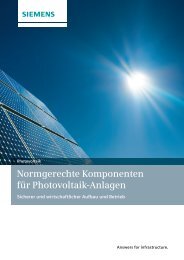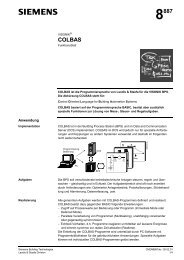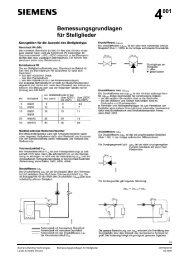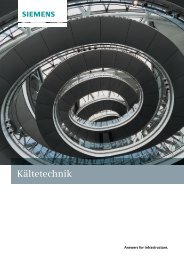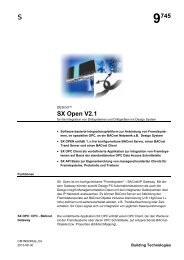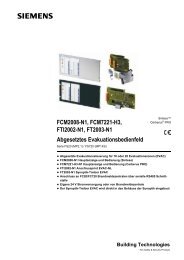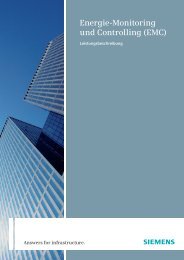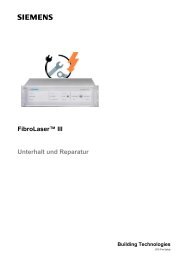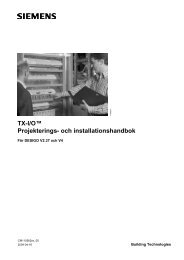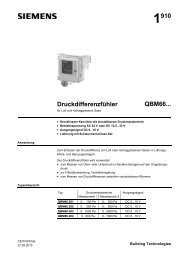Sensor Installation Handbook Preface 3rd edition - Siemens ...
Sensor Installation Handbook Preface 3rd edition - Siemens ...
Sensor Installation Handbook Preface 3rd edition - Siemens ...
You also want an ePaper? Increase the reach of your titles
YUMPU automatically turns print PDFs into web optimized ePapers that Google loves.
Principles of operation<br />
62<br />
Time constant of measuring sensors in liquids<br />
For measuring or acquiring medium temperatures in piping systems,<br />
sensors are usually installed with protection pockets. These pockets<br />
represent the first delay element in the measuring process, the air gap<br />
between pocket and sensing element the second. The third delay<br />
element is the sensor’s time constant. Of these three delays in series,<br />
that of the air gap between pocket and sensing element is the greatest<br />
since the heat conductivity of air is poor. This poor transmission of<br />
heat from the medium to the sensing element can be considerably<br />
improved by filling the air gap with oil or glycerin.<br />
If glycerin is used, the welded protection pocket must be inclined.<br />
Transfer with time constant = T<br />
No sensors transmit the change in a measured variable instantaneously.<br />
The delay in transmission time (the time constant, or “lag”, T) can be shown<br />
in diagrammatic form.<br />
Change in measured variable<br />
Time constant T<br />
The time taken to transmit 63% of the total change in the measured<br />
variable is referred to as the time constant, T.<br />
It takes a period equivalent to five times the time constant to transmit<br />
approximately 99% of the change in measured variable.



